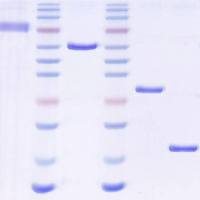Herpes Simplex Virus-Cell Interactions Studied by Low-Fading Contrasted Immunofluorescence
互联网
互联网
相关产品推荐

Hemagglutinin/HA重组蛋白|Recombinant H1N1 (A/California/04/2009) HA-specific B cell probe (His Tag)
¥2570

Anisakis simplex SXP/RAL-2 family protein Ani s 5 重组蛋白表达
¥2000

IL-2重组蛋白|Recombinant Human IL2 Protein, Low Endotoxin
¥780

Capsid L1重组蛋白|Recombinant Human Papilloma Virus type 16 (HPV 16) L1 protein (VLP)
¥3220

PVRL2/PVRL2蛋白Recombinant Human Nectin-2 (PVRL2)重组蛋白Herpes virus entry mediator B Short name: Herpesvirus entry mediator B Short name: HveB Nectin cell adhesion molecule 2 Poliovirus receptor-related protein 2 CD_antigen: CD112蛋白
¥1344
相关问答

